The Jumping competition at the Paris Olympic Games was like no other – eye-popping fences, thrills, spills, and a final outcome that kept everyone guessing until the very end.
“Well, what an extraordinary Olympic Games we’ve had for the jumping… you could not have scripted it,” says Australian jumping commentator Martin Gostelow. It’s a sentiment shared by many, with Australian equestrian mainstay Heath Ryan exclaiming: “I do not think I have ever seen more difficult show jumping tracks in my life. They were terrifying!” And that’s coming from an eventer.
There’s no doubt about it: Jumping in Versailles had us all on the edge of our seats from start to finish.
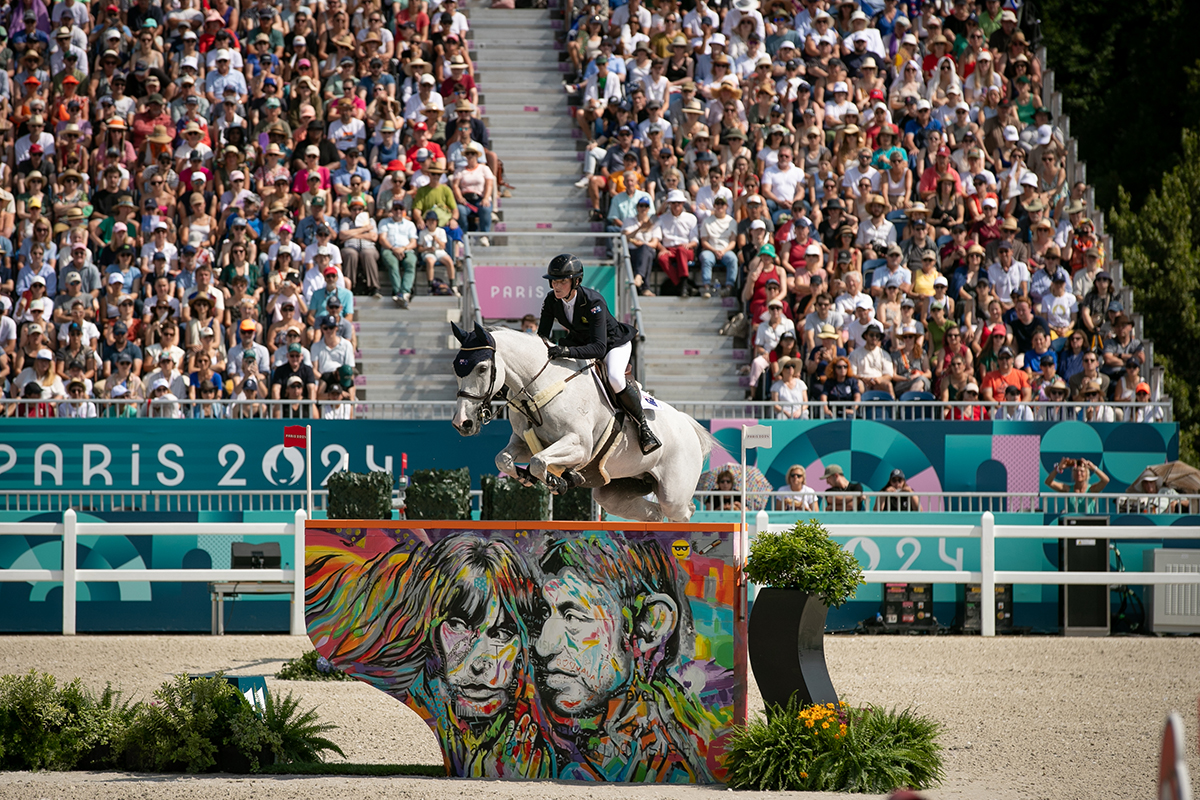
“Now on reflection, perhaps
this initial performance was a
hint at what could ultimately
transpire on the final day.”
THE TEAM QUALIFIER
One would think the first round of the Games would give horse and rider a slightly softer start, but that was not the case in Paris where course designers Santiago Varela and Gregory Bodo threw down challenges from the get-go.
“It certainly did not disappoint,” reflects Martin on the action that unfolded on Day One. From 20 teams, just one finished with all three combinations clear – and that was the German team comprised of Richard Vogel and stallion United Touch S (Untouched x Touch of Class, by Lux Z Z), Philipp Weishaupt and Zineday (Zinedine x L.B. Paola, by Polydor), and Christian Kukuk and Checker 47 (Comme Il Faut 5 x Pamina, by Loro Piana Come On).
Clear and under time rounds in the Team Qualifier also went to the USA’s Laura Kraut and Baloutinue (Balou du Rouet x Utika, by Landor S), who were miles ahead of the field in terms of speed, and the late call-up Karl Cook with Caracole de la Roque (Zandor Z x Pocahontas D’Amaury, by Kannan GFE); Great Britain’s Ben Maher and Dallas Vegas Batilly (Cap Kennedy x Violetta Batilly, by L’Arc de Triomphe); Belgium’s Gilles Thomas and stallion Ermitage Kalone (Catoki x Bellaventure Kalone, by Kannan); the Netherlands’ Maikel van der Vleuten and Beauville Z (Bustique x Wrinton, by Jumpy des Fontaines), and Kim Emmen and Imagine (Cassini Gold x Audi’s Nigel, by Lord Z); Ireland’s Daniel Coyle and Legacy (Chippendale Z x Regina D, by Bon Ami); France’s Julien Epaillard and Dubai du Cedre (Baloubet du Rouet x Urgada de Kreisker, by Diamant de Semilly); Sweden’s Henrick von Eckermann and King Edward (Edward 28 x Koningin de Lauzelle, by Feo), and Rolf-Goran Bengtsson and Zuccero HV (VDL Zirocco Blue x Zaresa, by Caretino 2); and Israel’s Daniel Bluman and Ladriano Z (Lawito x Gambelle, by Baloubet du Rouet).
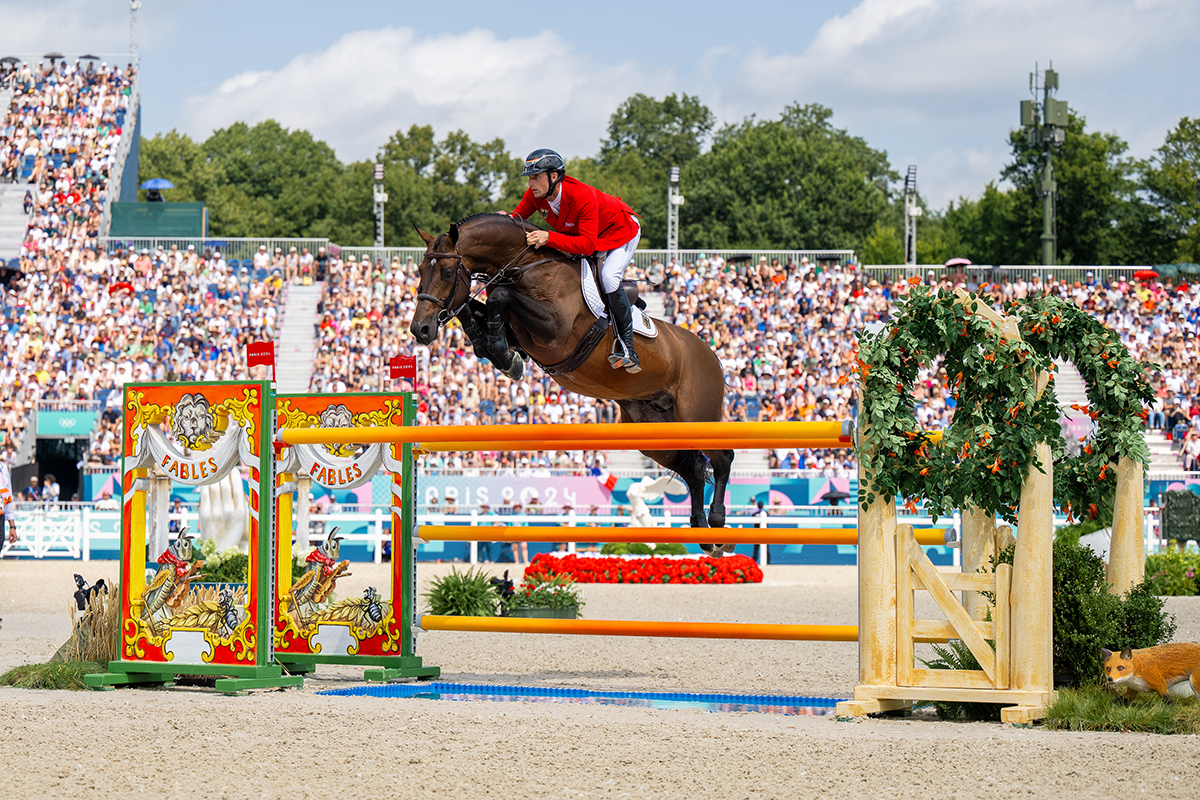
Ten teams progressed to the Team Final in the following ranking order: Germany, USA, Great Britain, Belgium, the Netherlands, Ireland, France, Sweden, Israel, and Mexico.
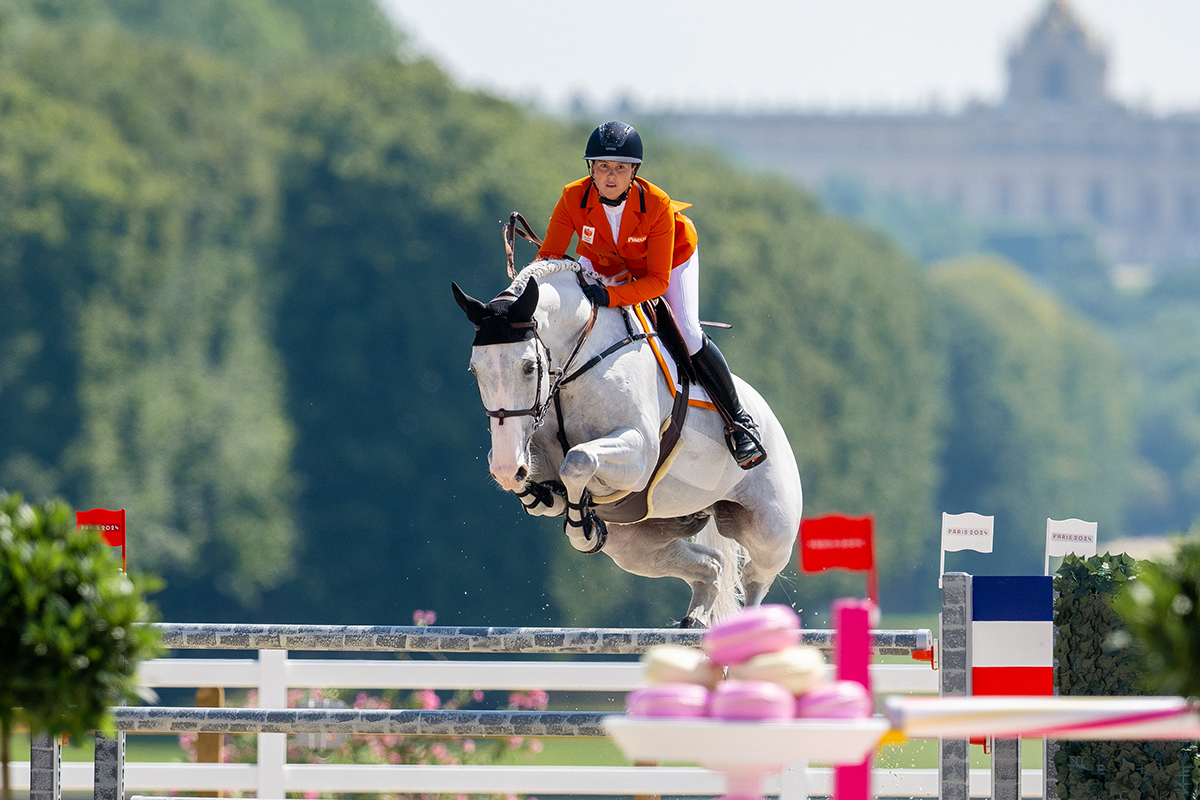
THE TEAM FINAL
“Course builders are such a big part of the mechanism of our sport, and what a course from Santiago Verela and assisted by Gregory Bodo. Without good builders, there is no top sport,” reflects Martin of the course that awaited teams in the clean-slate final.
It was indeed another challenging track, with clear and under time rounds few and far between. In fact, there were only seven among the classy 30 starters: Great Britain’s Harry Charles and Romeo 88 (PKZ Contact van de Heffinck x Only Picobello, by Orlando), with Harry competing just three weeks after sustaining a fractured wrist; Karl Cook and Caracole de la Roque, and McLain Ward and Ilex (Baltic VDL x Calendula, by Chin Chin), also of the USA; Fance’s Olivier Perreau and Dorai d’Aiguilly (Kannan x Bijou Orai, by Toulon); Kim Emmen and Imagine; Philipp Weishaupt and Zineday; and Daniel Coyle and Legacy.
Across the Qualifier and Final, there were only four combinations that produced two clear rounds without any time penalties: Karl Cook and Caracole De La Roque, Kim Emmen and Imagine, Philipp Weishaupt and Zineday, and Daniel Coyle and Legacy.
In the end, it was the British team that secured a historic gold medal: Ben Maher and Dallas Vegas Batilly, Harry Charles and Romeo 88, and Scott Brash with Jefferson (Cooper van de Heffinck x Hovis, by Irco Mena). The win echoed that of the British performance at London in 2012, where Ben Maher and Scott Brash teamed up with Harry’s father, Peter Charles, to claim a gold medal on home soil.
“What a great team event; Great Britain was the standout over the two rounds of competition,” says Martin of the Gold Medal winning performance. “The British were just outstanding in the final, with beautiful horses and impeccable riding.”
THE INDIVIDUAL QUALIFIER
The Individual Jumping Qualifier saw an evening filled with exhilarating performances, intense competition, and surprising turns of events. “We saw some truly spectacular performances alongside moments of high drama and unexpected twists,” muses Martin of what was an edge-of-your seat competition.
Several top combinations had a rail – including McLain Ward and Ilex at the last fence – however, it was the 12-fault performance of Richie Vogel and United Touch S that was perhaps the biggest upset of the qualifier, with the highly fancied pair missing out on a berth in the final.
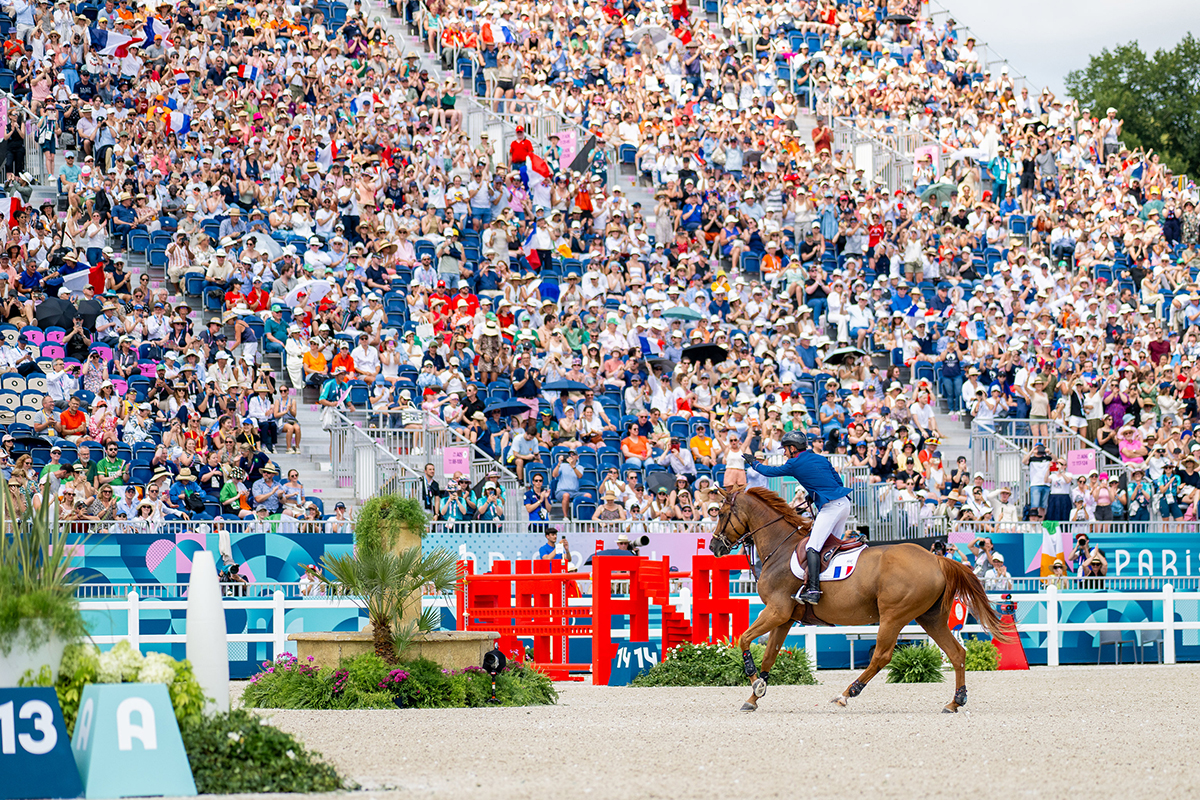
“Julien Epaillard delivered
a flawless round…”
Spurred on by the French crowd, Julien Epaillard delivered a flawless round on Dubai Du Cedre, the fastest clear of the day at 73.07 seconds, while Ireland had a brilliant night with Shane Sweetnam on James Kann Cruz and Daniel Coyle on Legacy both delivering faultless rounds. Harrie Smolders of the Netherlands on Uricas V/D Kattevennen (Uriko x T-Cassina, by San Patrignano Cassini) also jumped clear.
However, there were only two combinations that maintained their perfect scoresheet at this point of the Games: Kim Emmen and Imagine, and Karl Cook on Caracole De La Roque. While no scores from the Team rounds counted in the Individual competition, it was clear these two were in form.
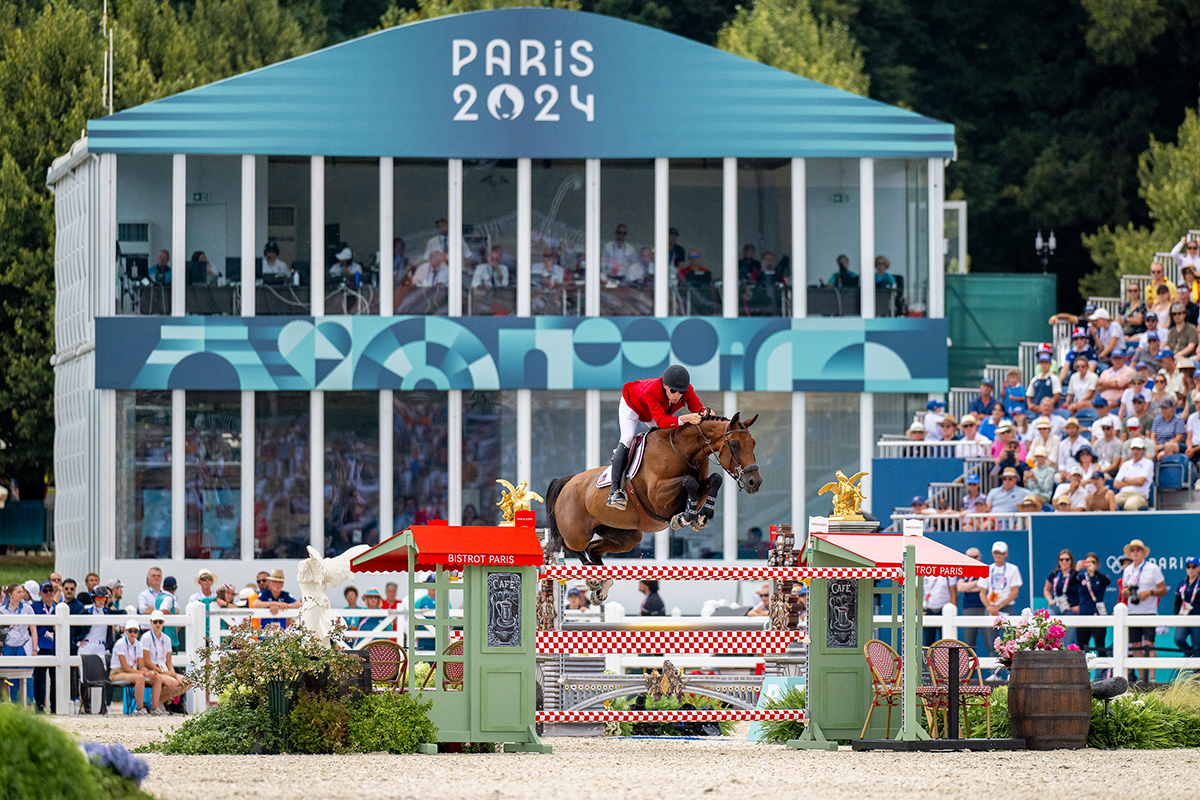
THE INDIVIDUAL FINAL
Australian course designer David Sheppard commented on the course prior to the start of the highly anticipated individual Final: “As expected, the Individual Final is big, careful, and a long way around; no secrets there. Again technical, with a variety of decisions to be made. [Course designer Santiago Verela] would be hoping for a little more than a handful clear. The standard is high, so maybe more.”
At the top end of jumping, European course builders aim for 10% to go clear. Here in Paris, three of the thirty finalists did just that. “Santiago Verela absolutely nailed his 10%. Not only that, but they were the three medal positions. It could not have been scripted better,” enthuses Martin. Interestingly, the three that jumped clear were combinations with faults on their scoresheets from previous rounds – not that it mattered.
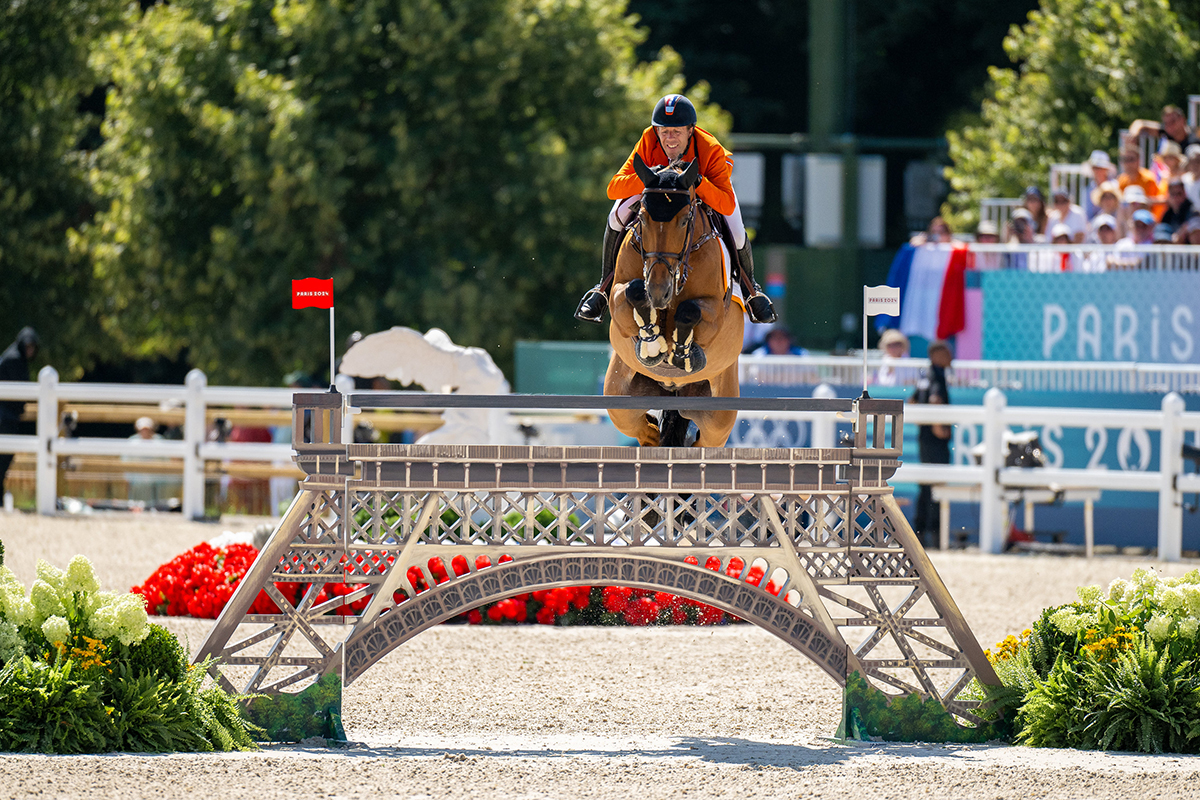
However, before the jump-off could take place to decide the medals, spectators were left stunned by perhaps the biggest surprise of all: the elimination of world No. 1 combination Henrick von Eckermann and King Edward. It hadn’t been their event, but unfortunately it really did come undone for them in the final.
“What an extraordinary dismount; if you had not seen it, you would not believe it. There was no fence nearby and we lost Henrick out the side door,” explained Martin of the moment that had everyone gasping.
Landing from the open water at Fence 6, Henrick fought to add a stride before the Eiffel Tower vertical. The pair scrambled over it, chased the five strides to the oxer at Fence 8 and then miscommunicated on landing. Landing right, they swerved left then ran into the timers on the side of the arena. Henrick was pitched over his horse’s head and a bridle-less King Edward trotted off before quickly being collected by his groom. Fortunately, neither came to harm, but it was certainly one of the biggest shocks of the competition from the Tokyo Team Gold medallists.
Back to the combinations in medal contention, and the stage was set for a thrilling three-way jump-off between Germany’s Christian Kukuk and Checker 47; The Netherland’s Maikel van der Vleuten and Beauville Z; and Switzerland’s Steve Guerdat and Dynamix De Belheme (Snaike de Blondel x Soudaine du Montet, by Cornet Obolensky).
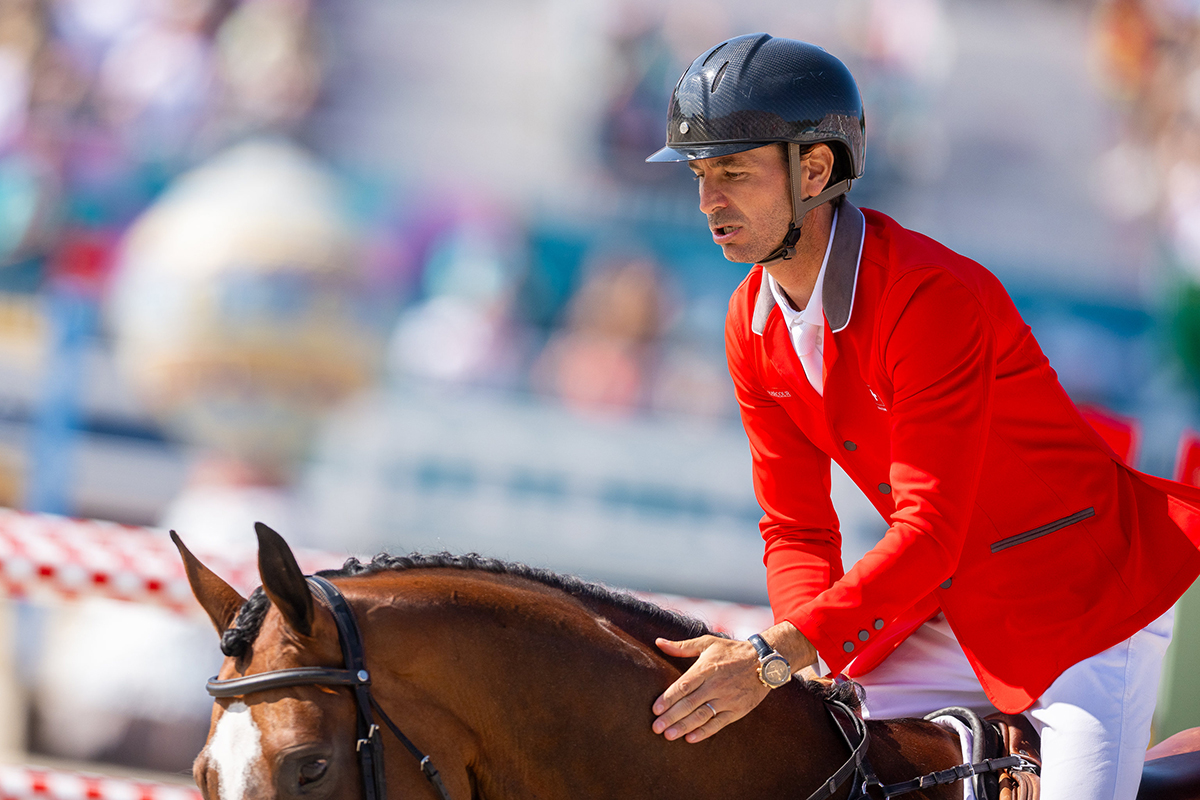
First out was the slowest of the three clear combinations, Christian Kukuk and Checker 47, and they rode a careful, quick clear. It proved to be the right tactic, and when a rail fell for each of the two subsequent combinations, the 34-year-old German – who trains with Ludger Beerbaum, himself an individual gold medallist in 1992 – watched on is disbelief as he became an Olympic Gold medallist. Remarkably, this was Germany’s sixth time taking Individual Olympic Jumping Gold. Steve Guerdat, the Individual Gold medallist from London in 2012, had to settle for Silver with Dynamix De Belheme, while Maikel van der Vleuten and Beauville Z repeated their Bronze Medal performance from Toyko.
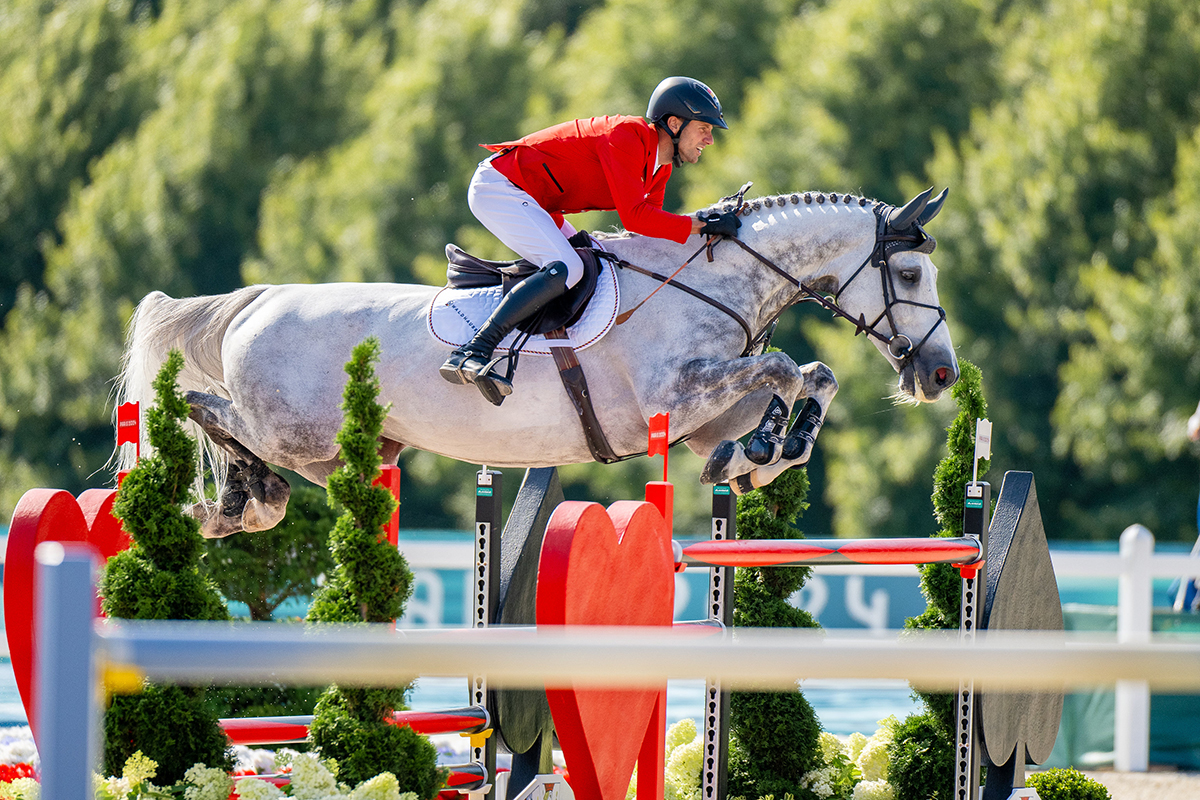
OUR AUSTRALIAN TEAM
The Australian Jumping Team consisted of Thaisa Erwin on Hialita B (Emerald x Dialita B, by Vaillant), Hilary Scott on Milky Way (Clearway x Galaxie Pierville, by Jalisco B), Edwina Tops-Alexander on Fellow Castlefield (Je T’Aime Flamenco x Bred by Liefhebber, by Twister), and Amber Fuller the travelling reserve with Nopal van Tallaert.
“There’s still much
to appreciate about
our team’s efforts.”
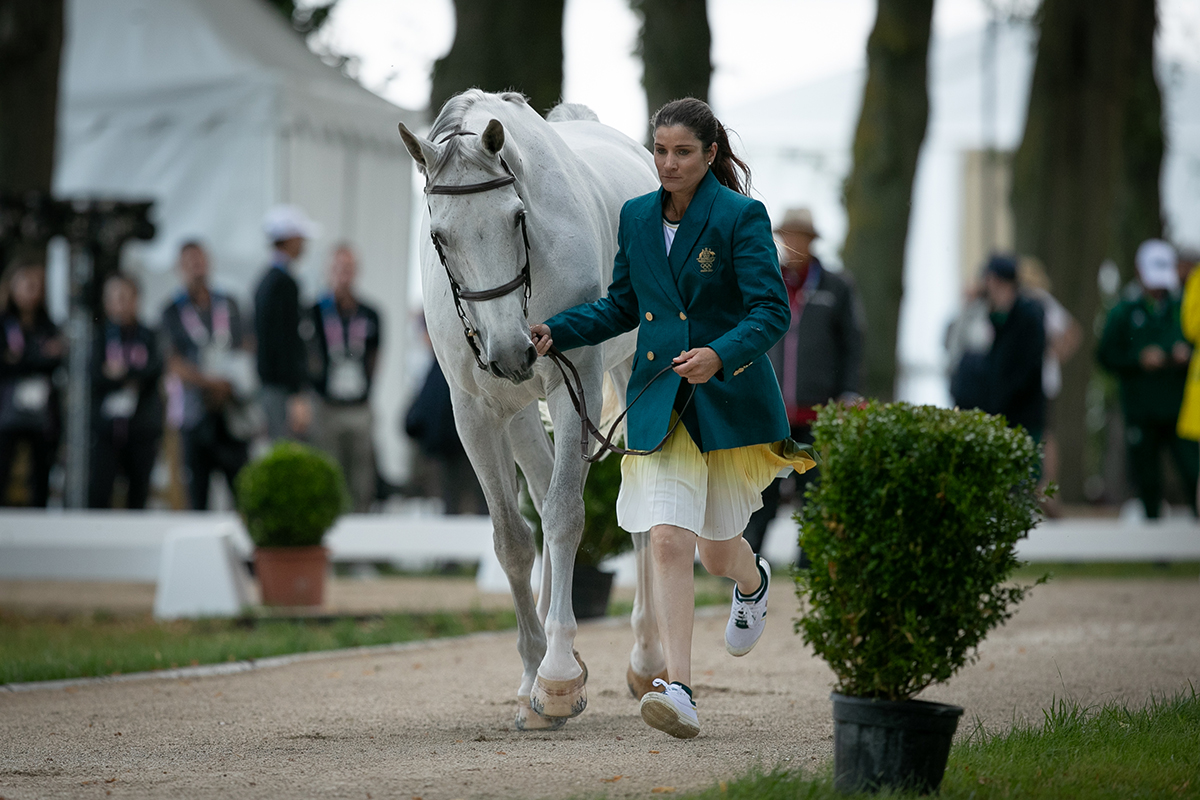
The Aussies placed finished 15th in the Team Qualifier. “While the results weren’t what we hoped for, there’s still much to appreciate about our team’s efforts,” says Martin. “They rode some really smart lines and we weren’t too slow, which has been a concern in the past.
“Edwina used all her grit and determination, hallmarks of her as an elite athlete,” says Martin of the five-time Olympian’s four-fault round in the Team Qualifier with Fellow Castlefield. The Individual Qualifier didn’t quite go to plan and their pair had two rails, with Edwina later saying Fellow didn’t feel quite himself out on the arena the second time around.
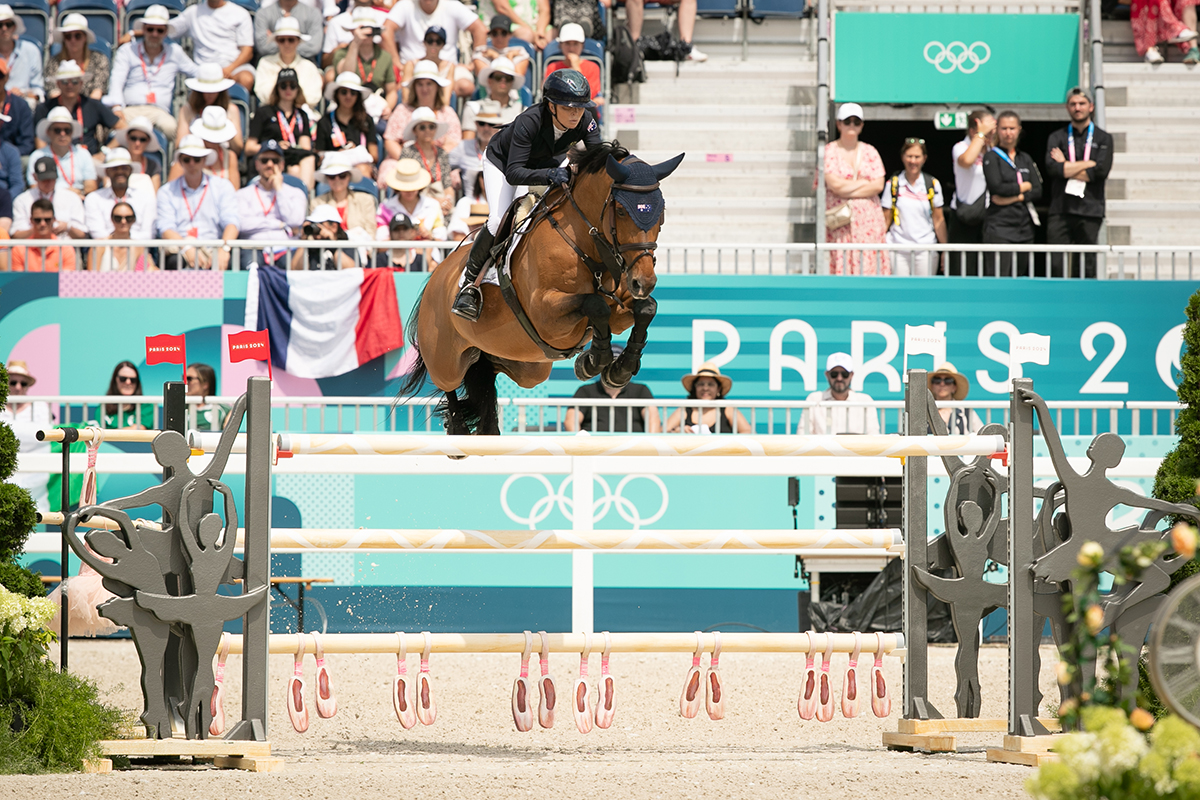
Both Thaisa and Hilary shone in the Individual Qualifier, where they had just two rails down apiece – an improvement from their four rails in the Team Qualifier.
“Our Olympic debutantes, Thaisa Erwin and Hilary Scott, both on mares, faced their own set of challenges. These mares are notoriously delicate rides, requiring patience and ultra skilful, sympathetic aids from the saddle. The modern show jumping course demands that horse and rider are comfortable with the challenges presented from maximum speed, height, and width. With everything on curved lines, light cups, and light poles, any slight deviation to the plan on course can lead to faults. Both our debutantes rode with conviction, on pace and with supremely professional attitude.
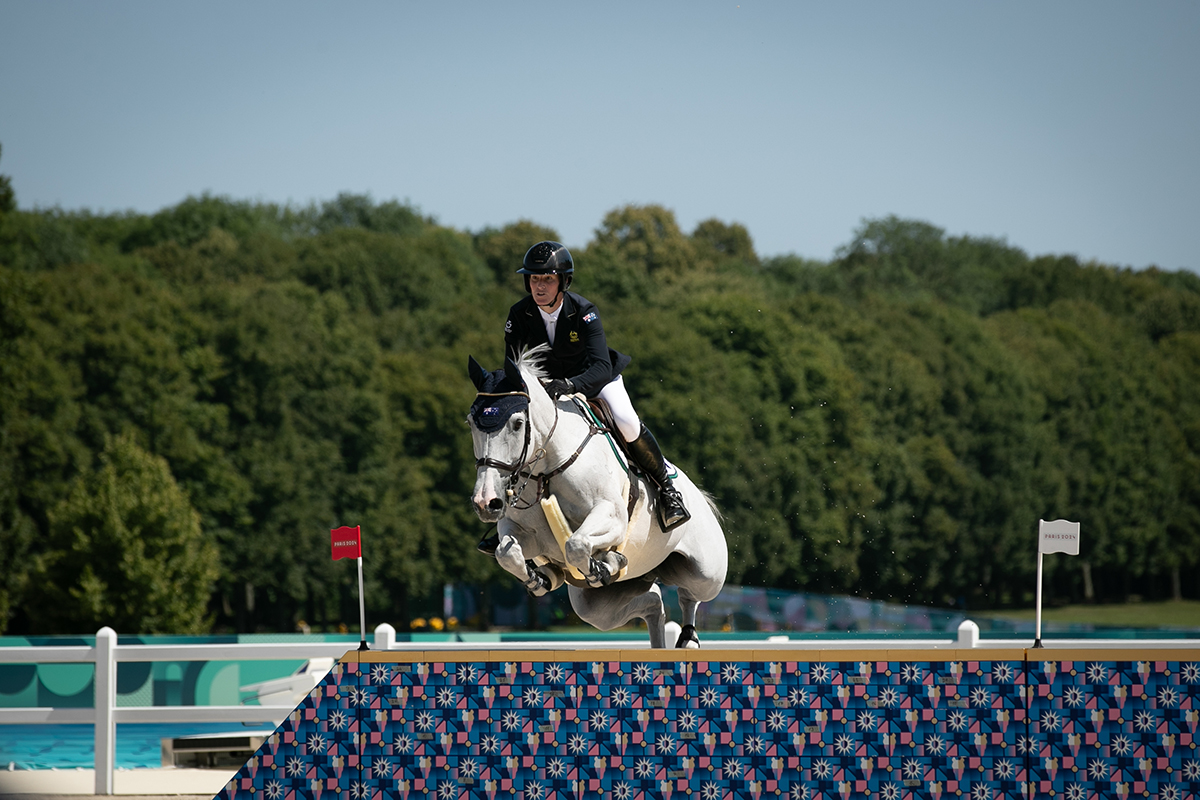
“Hilary Scott and Milky Way had a very forward, professional and disciplined approach to their jumping the second time out. The round had rhythm and style, a really great ride and fabulous jumping for 8 faults.
“Thaisa’s round in the Individual Qualifier was shaping up to be one of the most outstanding rounds we have seen at a Games for many years from an Australian competitor. They finished on a total of 8 penalties late in the course, but three-quarters of that track was total world class; it was so unlucky,” reflects Martin.
“It was shaping up to be one of
the most outstanding rounds we
have seen at a Games for many years
from an Australian competitor.”
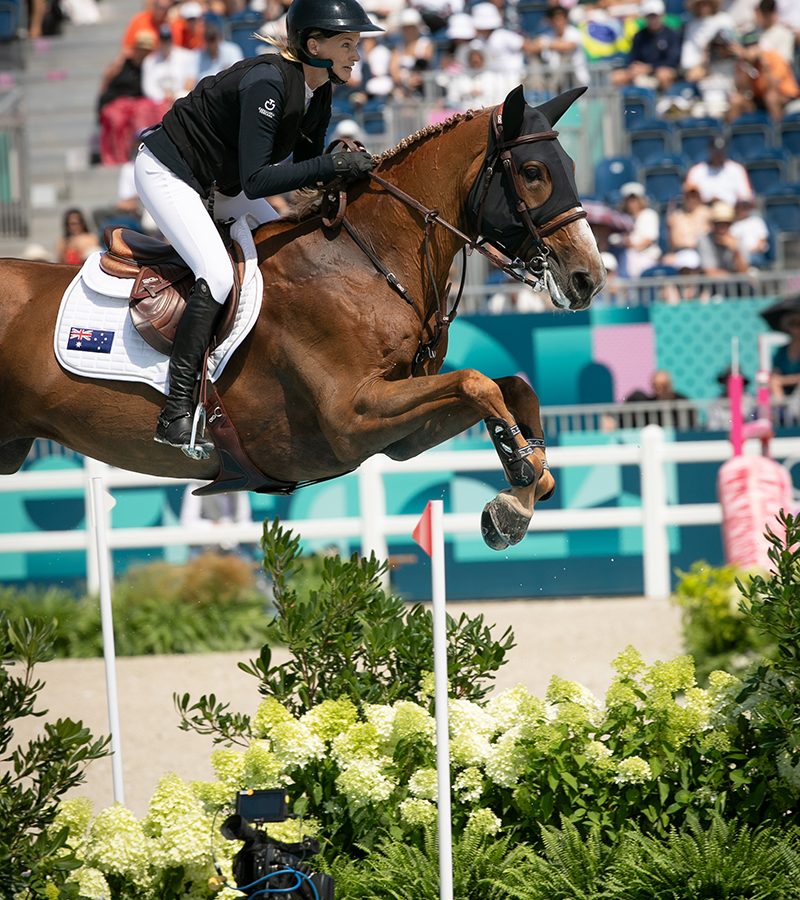
“While this wasn’t the result we aimed for, the journey of our Australian team is filled with valuable lessons and promising signs. Our debutantes have shown that they can compete at this level, and with continued experience and exposure they’ll only get better. There’s every reason to be optimistic about our riders’ future in international show jumping.”
THE PATH FORWARD
“It’s clear that while our girls are experienced and based in Europe and the US respectively, there’s still a need for more exposure at the five-star level. High-performance managers must focus on how we can compete more regularly with other nations, not just in terms of height but also gaining valuable team experience,” says Martin, adding that Australia’s governing bodies need to provide a better pathway for our top Australian riders.
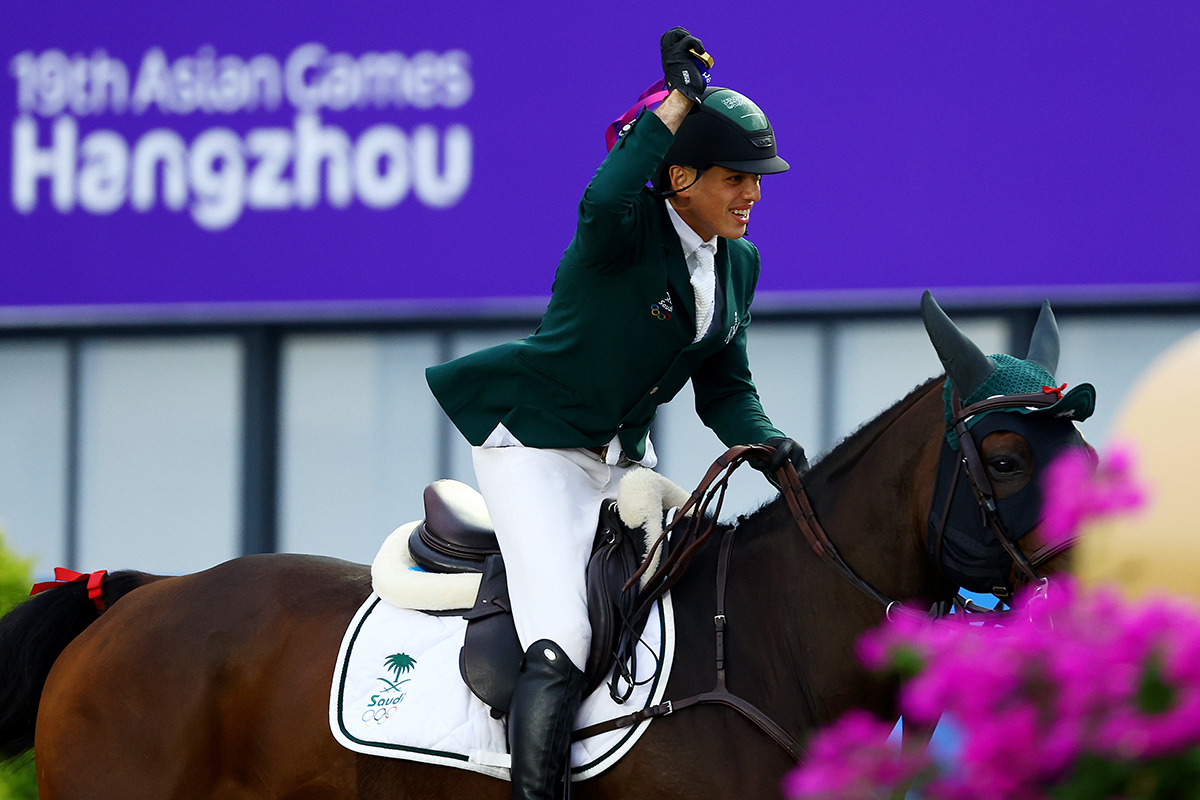
Martin emphasises that it’s the team experience and exposure to competing under pressure at these big championship events that is so hard to come by. “Why can’t we explore sending teams to the Asian Games? It’s similar to what European riders have with the FEI European Championships, and those on the American continent have with the Pan American Games.
“In 2022, Australia was for the first time invited to send athletes to the Asian Games (held in Hangzhou, China and postponed to 2023), although none of the invited sports federations took up the offer. Although it’s unclear whether equestrian sports made this list, it’s perhaps still something to consider and push for at the next addition of the Games in Aichi-Nagoya, Japan in 2026. Held 19 September – 4 October, these Games will follow on from the FEI World Championships in Aachen (11-23 August) and could perhaps serve as team experience for the combinations who miss the cut for Aachen. With the rise of education and talent among several Asian and Middle Eastern countries – most of whom are involved in these Games – it certainly would have the feel of a true championship.”
Besides the Asian Games, other opportunities for team championship experience could be gained via an increased number of Nations Cup entries in Europe (it’s not easy for non-European nations to gain entries to these events, however work is underway to secure Nations Cup team starts in Scandinavia) as well as the possibility of a trans-Tasman Nations Cup event incorporating New Zealand.
A post-Olympics article from the Financial Review consulted Thaisa Erwin and Katie Page – Harvey Norman CEO and co-founder of the Magic Millions Showjumping – and their minds seemed to be on a similar track.
“There are a lot of shows that are just for European countries at the moment. We’re trying to ask if they’ll let other countries in. Access to high-level shows has always been a problem for us,” Thaisa explained to Financial Review.
Katie, whose daughter Georgie is a professional showjumper, began the Magic Millions Showjumping on the Gold Coast for the very reason of providing Australian riders with big-atmosphere experience and a platform to then step up from to big events in Europe or North America. “It’s supporting grassroots, supporting the discipline. There are not enough pathways for those kids,” Katie told Financial Review.
Martin is also passionate about building these pathways, explaining that if we can improve this now, it will of particular benefit to our next generation of stars. “If international team championship opportunities can be secured, our next generation – those riders who are 16–21-year-olds – it means they can be ‘blooded’ on the international scene and in championship environments from the get-go. From a young age, they would be really getting a sense of the occasion and invaluable experience. To me, that would be really exciting.” EQ





